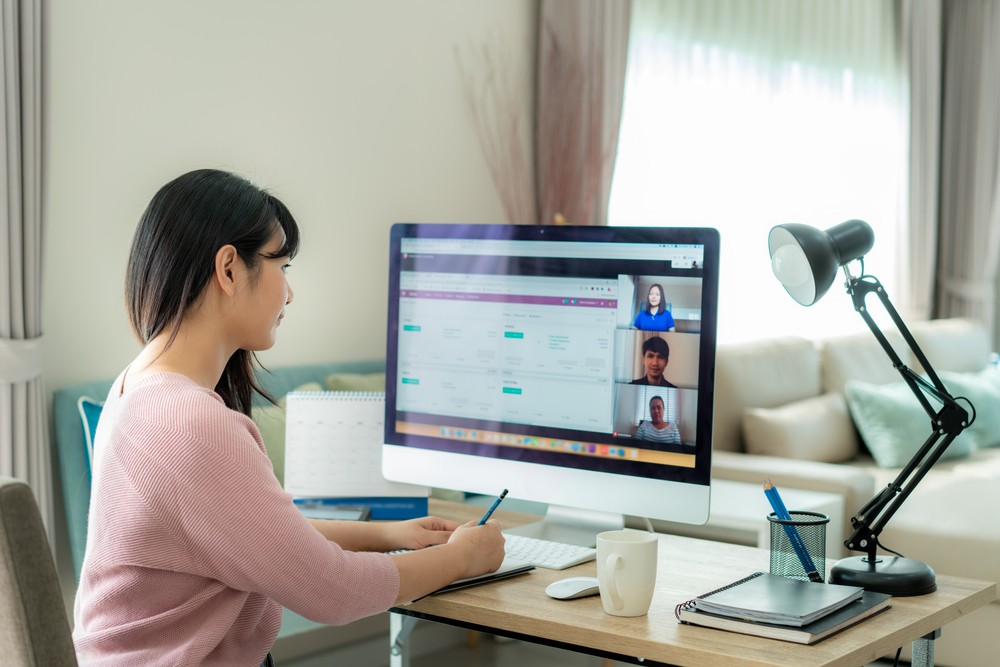While there’s been an influx of organisations demanding a return to office, hybrid working continues to be favoured by employees. Praised for its work-life balance benefits, it allows employees to work in a way that suits them. But even after three years of trial and error, organisations are still finding their feet with the culture and technology needed to make it work.
Without one set definition of what hybrid working looks like, businesses need to strike a balance in meeting both their employee and business needs. To maintain a thriving, engaged and productive workforce, there needs to be guidelines in place to make sure employees have the support to do their best, wherever they are. This means taking into account three key areas: inclusivity, innovation and workplace culture.
To enhance these and drive hybrid work success, businesses need to get the right mixture of culture, technology and office facilities.
Trust as the cornerstone for hybrid work
A key tenet to successful hybrid working is trust. Whilst individuals are part of a team, they equally need to be given the freedom to develop their own skills and complete their work. Sometimes quiet focus time is needed, away from emails and instant messaging, and employees shouldn’t feel that the pressure of ‘presenteeism’ to distract them from getting on with focused tasks.
If employees are being called into the office, there also needs to be purposeful presence. This means there should be a reason for employees making the journey in, such as an in-person meeting or brainstorm session with the entire team, rather than just carrying out solo tasks like written work or admin – which requires quiet focus and could be done more effectively at home.
Every employee as equal
Regardless of where employees are they should feel empowered to speak up in meetings, stay engaged and contribute meaningfully.
Technology is central to this, in promoting what we call ‘meeting equity’; and a new breed of meeting room solutions are now available featuring intelligent innovations to make sure everyone is seen and heard clearly. For example, Logitech Sight is an innovative tabletop meeting room camera which helps to ensure that in-room participants are presented face-on to at-home participants, as if everyone has a seat at the same table.
As well as seeing clearly, we also need to focus on sound. We’ve all been on a video call that sounds like you’re dialling into a bowling alley, and the best way to feel excluded is by not being able to hear what’s going on.
Whilst intelligent technology can go a long way towards improving audio through directional microphones and AI noise suppression, meeting room acoustics are equally important. In the room itself it’s worth reducing hard surfaces such as glass which cause echo, and including lots of soft furnishings (which are also welcoming!) which can absorb further ambient noise. To be fully prepared, it’s also worth considering adding fabric padding to walls, which can nicely blend into a meeting space aesthetic.
Making the office human-centric
Businesses should also promote equality, participation and empathy. A good way of doing this is to make sure that offices themselves are “magnets” – places that employees want to come to, and feel like they are part of a wider community.
One way of doing this is to rethink what me mean by an office. In the context of hybrid, we should instead think of them as ‘relationship buildings’ that are designed around being welcoming and making connections. Offices should also be built to feel like a home. For example, think of incorporating ‘welcome lounges’ for when employees arrive - a calm and peaceful area to help shake off any commute induced stress.
To promote sociability, corridors should instead be thought of as ‘avenues’ that are designed to deliberately slow you down and promote ‘bump talk’ (those spontaneous conversations that are sparked by unexpectedly seeing a colleague, and might just spur a new idea or initiative that wouldn’t have come about otherwise).
Offices should also look to incorporate ‘flexible architecture’ – where spaces can be adapted and changed with mobile furniture and technology. Fixed furniture can be anchoring and oppressive, and having flexible spaces helps to add to workplace dynamism and a sense of spontaneity.
All of this should also be done with sustainability at front of mind – going hybrid shouldn’t come at an environmental cost. We’re increasingly seeing office furniture that has been made from repurposed or natural materials, and new technologies are starting to incorporate post recycled plastics to reduce their environmental impact, helping organisations to stay to their sustainability targets.
An ongoing journey
There is no one size fits all when it comes to hybrid working. What works for one business, won’t necessarily work for another. As organisations navigate how it best works for them and their employees, what it looks like will continue to evolve.
A ‘test and learn’ approach that keeps employee needs at the very centre will be key to hybrid working success. Through this flexible approach, businesses can find the right balance between technology, facilities and culture that helps employees thrive.




